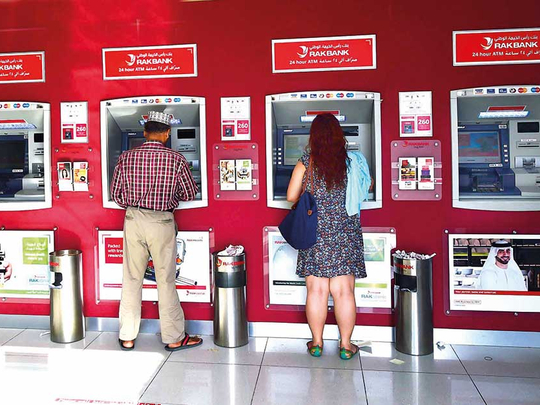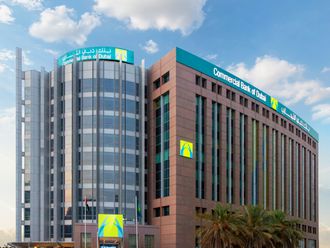
Dubai: The National Bank of Ras Al Khaimah (RAKBank) Group announced a consolidated net profit of Dh381.5 million for the half year 2017 down 14.3 per cent compared to Dh445.5 million reported in the same period last year.
The second quarter of 2017 the bank generated a profit of Dh226.7 million, an increase of 16 per cent year on year and a 46.5 per cent increase quarter on quarter.
Gross loans & advances grew by 6.2 per cent to Dh31.6 billion during the first six months of 2017 with strong growth in wholesale banking book and steady growth in the personal banking and business banking segments.
“The trends for the 1st half of 2017 are showing continued positive signs where solid progress is made by all business units being wholesale banking, business banking, personal banking, and Treasury,” said Peter England, CEO of RAKBank.
Total Income for the second quarter of 2017 increased by 2.1 per cent. Total assets increased by 3.4 per cent to Dh44 billion compared to the end of 2016. This was due to an increase in gross loans & advances of Dh1.8 billion partially offset by a decrease in investments of Dh497.6 million.
The healthy growth of corporate loans from wholesale banking and the steady progress of loans from the business banking and personal banking segments contributed to the increase of the gross loans & advances by 8.2 per cent year-on-year. Customer deposits grew by Dh1.2 billion to Dh30.6 billion, a 3.9 per cent growth compared to the end of 2016.
Total income for the first six months of 2017 was Dh1.9 billion up by 2.1 per cent for the second quarter of 2017 over the previous quarter, though declined by 2.8 per cent over the comparable period in 2016. Operating expenses were marginally up year-on-year after the cost optimisation exercise in the first half of 2016 and the cost to income ratio stands at 37.4 per cent.
Impairments continued remain high although are on their downward trajectory from the peak in the third quarter of 2016, declining by 14.9 per cent in the second quarter of 2017 over the previous quarter. Impairments during the six months of 2017 were down by 2.4 per cent from the same period in 2016.
“Impairments are still relatively high reflecting the nature of our legacy book, however we expect continued improvements in this area as the year progresses,” England said.
The bank’s capital adequacy ratio stood at 21.1 per cent at the end of June 2017. The regulatory eligible liquid asset ratio at the end of June 2017 was 14.9 per cent compared to 16.9 per cent at the end of 2016. The advances to stable resources ratio stood at 90.9 per cent compared to 85.5 per cent at the end of 2016.











